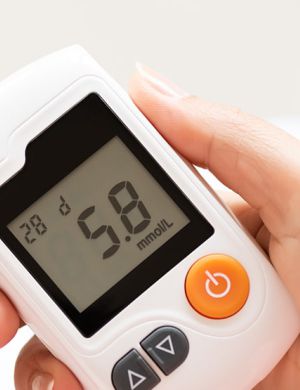
Infusion Pumps Safety Assurance
The FDA’s guidance, “Infusion Pumps Total Product Life Cycle,” provides recommendations for preparing The FDA’s guidance, “Infusion Pumps Total Product Life Cycle,” provides recommendations for preparing premarket submissions for infusion pumps and identifies device features that manufacturers should address throughout the full product life cycle. This guidance applies to Class II devices regulated under 21 CFR 880.5725, including the product codes listed below.
| Product code | Description |
| FRN | Infusion pump |
| MEA | Patient controlled analgesia (PCA) infusion pump |
| MEB | Elastomeric infusion pump |
| LZG | Insulin infusion pump |
| OPP | Insulin bolus infusion pump |
| LZH | Enteral infusion pump |
| MRZ | Infusion pump accessories |
| PHC | Infusion Safety Management Software |
Safety Assurance Case
Infusion pump 510(k) submissions often involve software, design, material, or performance modifications compared to the predicate device. FDA expects many new or modified devices to have different technological characteristics from predicates, even when the intended use remains unchanged.
Under Section 513(i) of the FD&C Act, substantial equivalence is determined based on whether the new or modified device is as safe and effective as the legally marketed predicate and does not raise different safety or effectiveness concerns.
A. General Considerations for Safety Case Development
A safety assurance case consists of three elements:
- Claim – A statement describing a property or capability of the system or subsystem.
- Argument – A rationale linking the evidence to the claim.
- Evidence – Supporting information validating the argument.
B. Hazard Analysis
The objective of the hazard analysis is to identify hazards and potential causes of the hazards.
| Infusion Pump System Hazards | System Hazard Definitions |
| Infusion Delivery Error | Intended medication selected and delivery attempted, but failure to deliver within the right time, dose, volume, patient, or anatomical or physiologic site specifications. This can include over-delivery, under-delivery or delay in delivery situations. |
| Incorrect Therapy | Failure to select or deliver the intended medication because the wrong substance was selected for delivery. |
| Biological/Chemical Contamination | Unintended contact with biological or chemical substance, or unintended patient or provider physiologic response to intended biological or chemical substance. |
| Traumatic Injury | Burns, cuts, abrasions, air embolisms, electric shock, etc. |
C. Performance Testing
Performance testing must incorporate statistical considerations—including hypotheses, sample size, power, controls, endpoints, and bias minimization. A 510(k) submission should include:
- The design requirement being verified and its importance to device function.
- Description of the tested unit and its relation to the finished device.
- Justification for using prototypes or production‑equivalent units.
- Explicit acceptance criteria.
- Detailed verification methods, including test apparatus descriptions when relevant.
- Explanation of how testing simulates clinical use, when applicable.
- Test results.
- Analysis of those results.
- Clear conclusions based on the findings.
D. Labeling
In addition to the requirements in 21 CFR 801.109, labeling should include:
- Indications for use
- Cleaning and disinfection instructions for reusable pumps
- Alarm limits and ranges
- Default settings
- Full user interface representation
- Compatible or dedicated administration sets
- Reservoir capacity, flow rate options, infusion profiles, and residual volume
- Factors affecting flow accuracy (temperature, viscosity, pressure, etc.)
- Accuracy specifications across flow rates and bolus volumes
- Bolus delivery rate
- Description of permissible fluids
- Complete operating instructions
- Methods for verifying calibration
- Alarm and message descriptions with recommended user actions
- Warnings related to diagnostic procedures
- EMC-related information with reference to standards (e.g., IEC 60601‑1‑2)
- Details on RF wireless capabilities (if applicable)
- Information for users with disabilities, when relevant
E. Alarms
Alarms must be clearly communicated to users. FDA recommends compliance with IEC 60601‑1‑8 for medical alarm systems. Manufacturers should assess risks associated with false alarms and missed alarms.
F. Safety Control Mechanisms
Infusion pumps may include safety features intended to detect or prevent hazardous situations, such as:
- Power‑on self‑tests
- Battery functionality tests
- Stuck key evaluations
- Audible tone tests
- Pump mechanism failure checks
- Watchdog timer tests
- System integrity checks (CPU, ROM/RAM CRC tests)
- Air‑in‑line detection sensors
- Environmental sensors
- Sensor functionality checks
- Dose error reduction features attached to the pump, if any; and 11. Dose error reduction checks.
Don’t miss out! Click here to stay in touch.
Categories
- Biopharma (58)
- Consumer Health (21)
- Cosmetics (11)
- Diagnostics (5)
- Digital Health (8)
- Food (2)
- Medical Device (112)
- OTC (5)
- Regulatory Intelligence (13)
- Standards (41)
Recent Blogs
Get the latest updates from Vistaar

CONNECT WITH US

Let's talk about how Vistaar can help you




